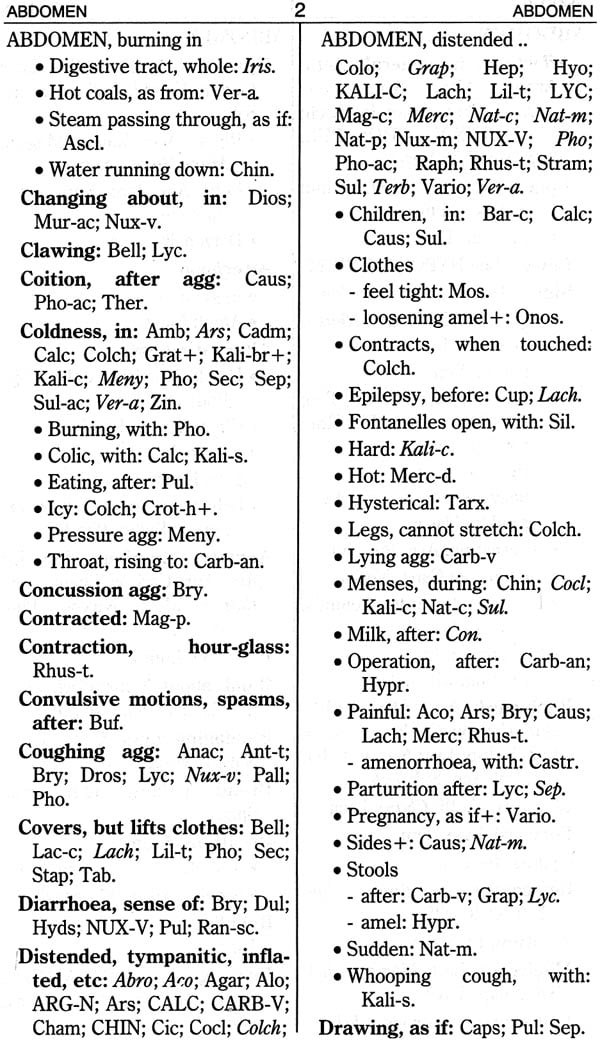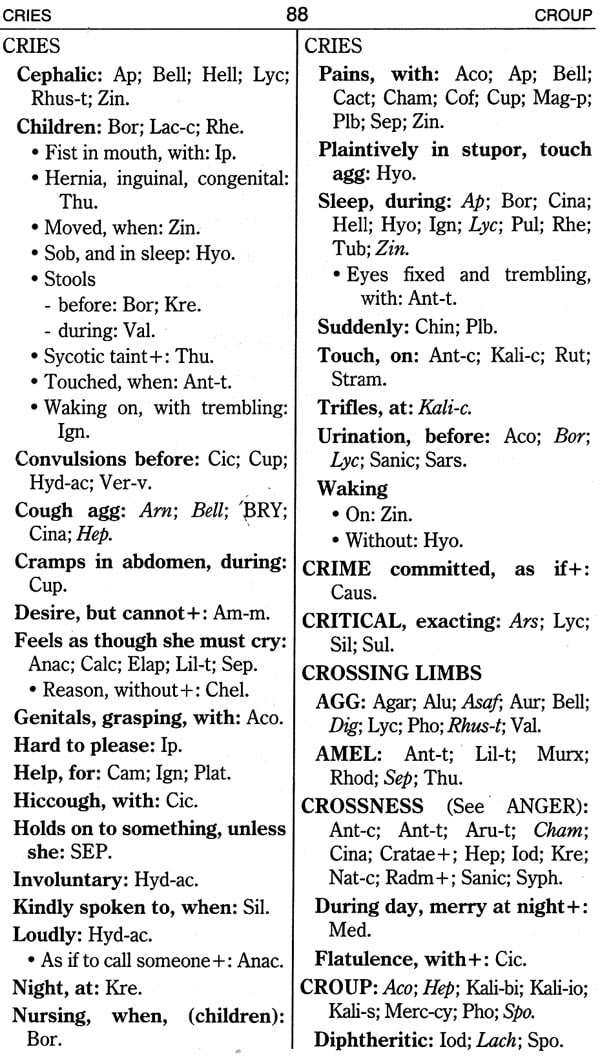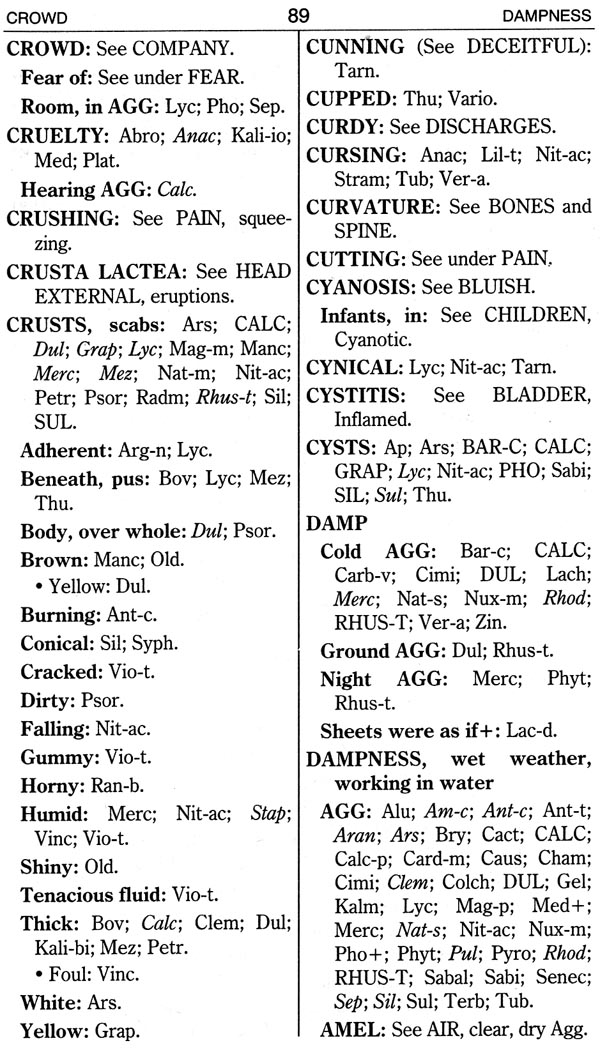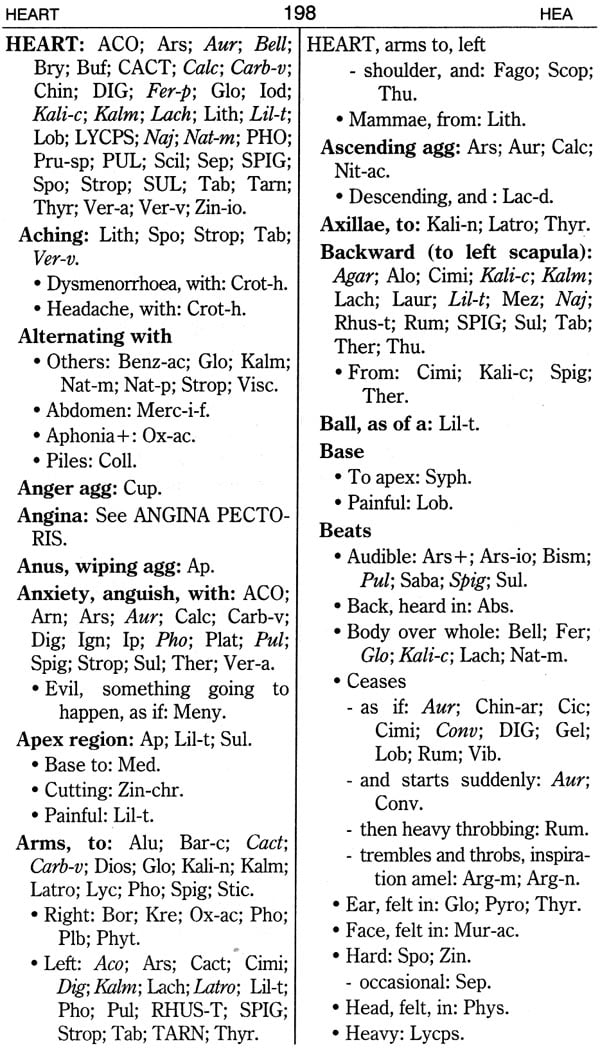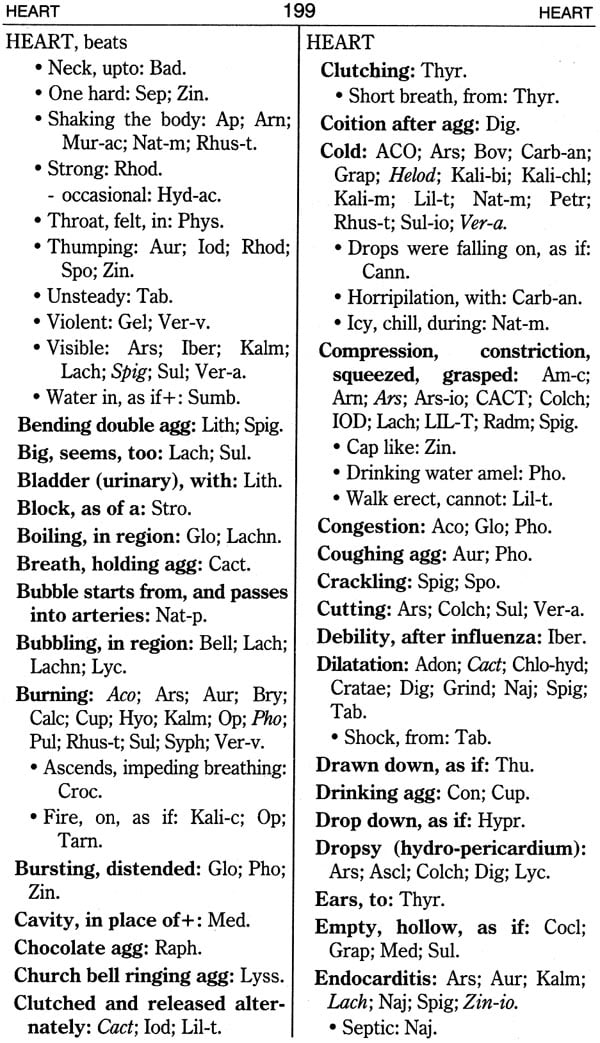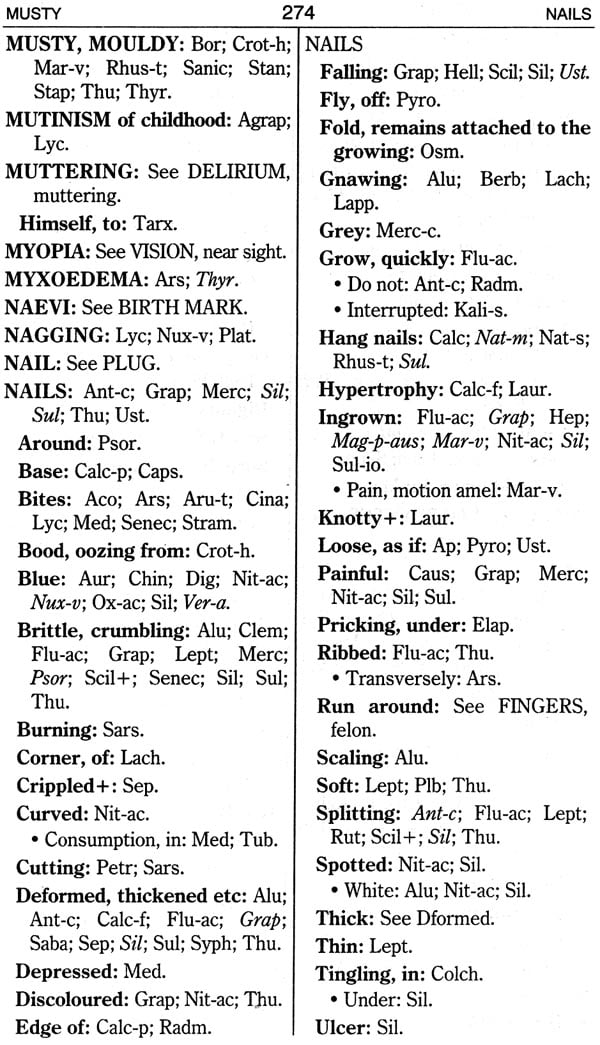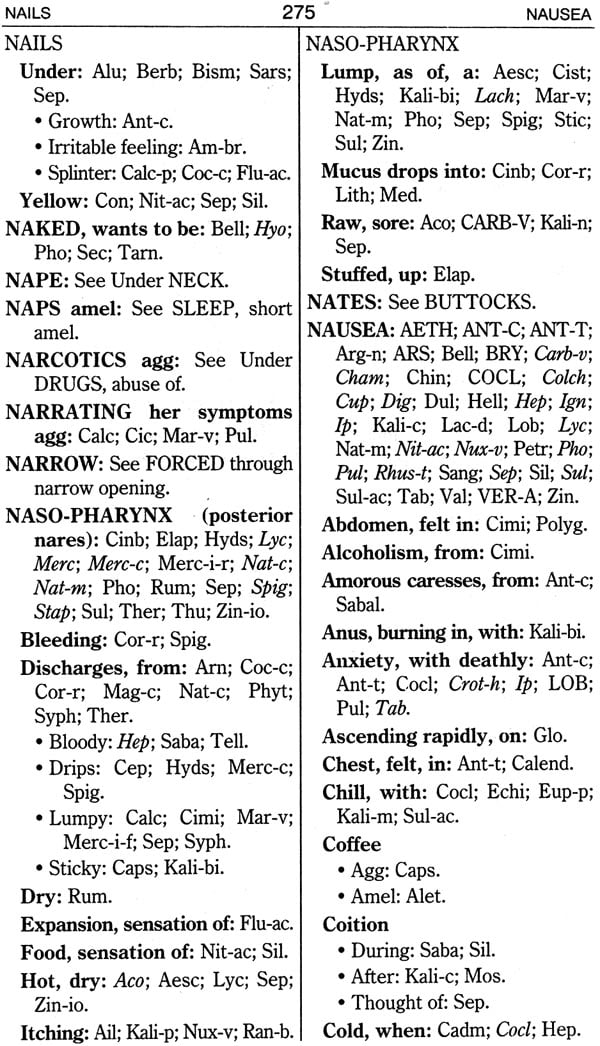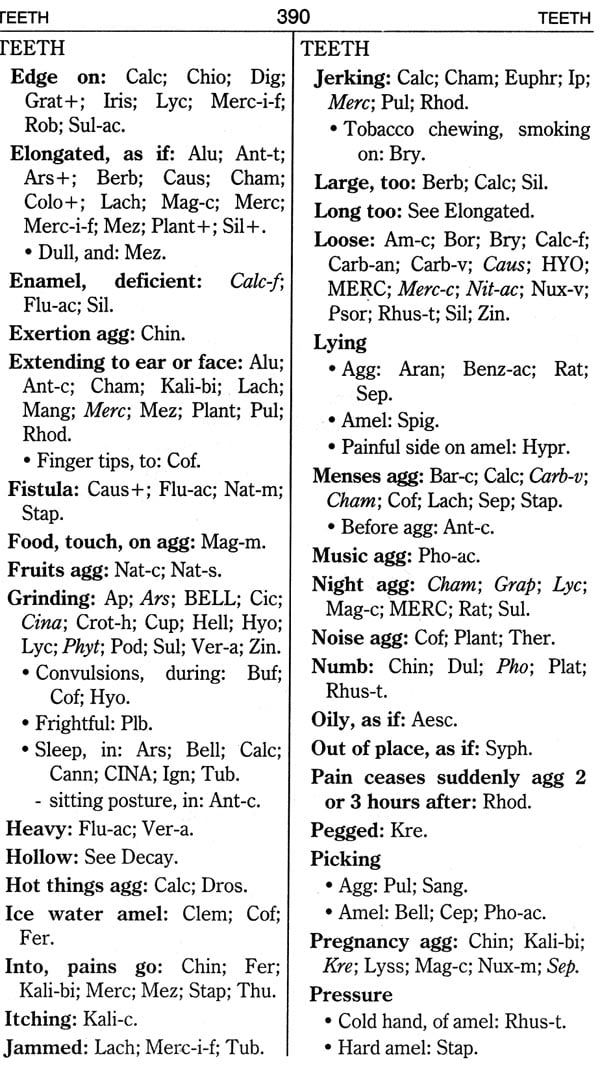
A Concise Repertory of Homoeopathic Medicines (Alphabetically Arranged)
Book Specification
| Item Code: | NAU307 |
| Author: | Dr. S. R. Phatak |
| Publisher: | B. Jain Publishers (P) Ltd |
| Language: | ENGLISH |
| Edition: | 2019 |
| ISBN: | 9788131902004 |
| Pages: | 462 |
| Cover: | PAPERBACK |
| Other Details | 8.50 X 5.50 inch |
| Weight | 490 gm |
Book Description
An ideal repertory for the beginner and for those who believe in artistic prescribing. The simplest and handy repertory in alphabetical order. Remedies for a particular rubric are reduced to minimum possible by careful selection which makes the drug selection easier, simpler and efficient. This is a repertory, which the students can use for the first case they wish to prescribe for. In this repertory, the headings include Mentals, Generals, Modalities, Organs and their sub-parts; all arranged in an alphabetical order. Physiological and pathological conditions have also been included. Cross references are given wherever necessary.
- Enlarged and improved version with additions from standard books and repertories like Boericke, Kent, BTPB, Dr Clarke’s dictionary etc.
- Inclusion of accurate clinical observations and experiences
- Contains pathological entities and rubrics even missed in the Kent’s repertory
- Generalization concept of Dr Phatak has been highlighted. General modalities have been mentioned as AGG. and AMEL., whereas particular modalities have been distinguished as agg. and amel.
Dr S. R. Phatak, a master prescriber in the field of homoeopathy, has contributed immensely to the homoeopathic literature. His books are available in English, Hindi and Marathi language. His book on Materia Medica is very popular amongst the students and practitioners. His books give us an insight into the philosophy and practice of this remarkable homoeopath. His literature is enriched with his own accurate clinical observations and experiences.
Prescribing in Homoeopathy is both Science and Art. But it is a difficult Art. Good case taking, sound knowledge of Materia Medica and skilful use of the reference books are the three prerequisites.
This repertory is intended to serve as a handy and useful reference book. It is an attempt to lessen the difficulties of the prescriber. No originality can be claimed in a book of this type, except that of presentation. There are advantages and disadvantages in the traditional type of repertory. The author feels that the present arrangement will minimize the disadvantages. Remedies for a particular rubric are reduced to minimum possible by a careful selection. No drug is given unless the author has used it in his own practice or unless there is strong justification provided for it, by authorities like Dr. Boger, Dr. Kent, Dr. Clark’s Dictionary etc.
A concise repertory cannot take the place of exhaustive repertories of Kent, Boeninghausen and others. It is aimed at reducing the burden of the prescriber, in every sense of the word.
In this repertory, the headings mentals, generals, modalities, organs, and their sub-parts are all arranged according to their alphabetical order. All the physiological and Plan of the Pathological conditions such as appetite, Book & How 4Versions, desires, nausea, vomiting, to Use it thirst, fever, pulse etc. are also included in alphabetical order. Cross references are given wherever necessary. In such arrangement there will be no difficulty in finding the appropriate rubrics. In each such rubric all important symptoms, their concomitants and their modalities are given. But the prescriber should not entirely depend on the particulars, for finding out the correct remedy. If he cannot find the correct remedy, according to the totality of symptoms, under the particular organ or sub-part of it, so much the better, otherwise he has to find the remedy considering the general conditions and general modalities. For all the general modalities, the words Agg. and Amel. are printed AGG. and AMEL. For the modalities under particular rubric only, there should be no difficulty in finding out as to which modality is general and which is particular. For example "Eyes closing Agg". Though this modality is given under eyes, it modifies the general symptoms as well as those of the eyes.
Dr. Boger has a remarkable knack of coining a general rubric from some particular symptom. (Those who have used his Synoptic Key must have noticed it). For example, take the rubric ‘Awkwardness’. This symptom is given by Dr. Kent in his repertory under, ‘Extremities’. There it shows that the patient either drops things from his hands or walks stumbling. But when Dr. Boger made it a general rubric, it means that the patient’s mental and/or physical behavior may be awkward. All such headings coined by Dr. Boger are included in this repertory. Not only that but the author himself has coined a few new headings from his own experience. For example the rubric "unsteady sensation". Once a patient consulted the author for this sensation. This patient, whenever he used to stand for more than a few minutes, used to feel unsteady, not giddy, but as if he was not standing firmly on the ground. The author found for him the remedy from those given under unsteady gait.
Every homeopathic practitioner is aware that modalities and concomitants are the most important factors for finding a correct remedy. The author has garnered all useful modalities from different standard repertories and has included those in this book. The modality "Holding the breath Amel", is given only by Dr. Boenninghausen in his Therapeutic Pocket Book. This modality gave the author, once an opportunity to cure remarkably an ulcer on the dorsum of the foot due to Thromboangitis obliterans.
The repertories are compiled for finding out as far as possible a correct remedy by referring to the various symptoms given under various organs; along with the circumstances, conditions and timing which modify them. In order to arrive at the suitable remedy, the remedies given under a particular symptom are graded according to their importance. The prescriber, however, should bear in mind that every remedy high grade or low grade becomes equally important when it is connected with peculiar concomitant or with and unusual condition or circumstance. Repertorization does not mean mechanical repertorization. Totality of Symptoms does not mean numerical totality, but qualitative totality. One peculiar concomitant or an unusual condition may determine the totality of the case.
**Contents and Sample Pages**

